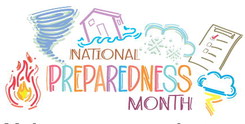Early detection of sepsis can potentially save lives
Every year, sepsis silently strikes down at least 1.7 million adults in the United States, a staggering number that continues to rise. As the population ages, antibiotic resistance grows and more individuals manage chronic diseases, the threat of sepsis looms larger than ever.
Because of that, September is Sepsis Awareness Month, dedicated to educating the public about the signs of sepsis and preventing its tragic consequences, highlighting the seriousness of this health issue.
Sepsis results from an infection that the body struggles to combat. The immune response can become overwhelming, causing injury to the body itself.
It can develop from infections, like urinary tract infections, pneumonia or skin infections such as cellulitis. Common symptoms include fever, chills, weakness and fatigue. In older adults, especially those over 65, sepsis may present as unusual weakness or confusion, indicating that an infection is becoming more severe.
Patients and their loved ones should be vigilant about symptoms like burning with urination, persistent cough or skin redness.
“Early intervention is key,” said Chad Radke, emergency physician. “If you notice these symptoms, seek medical care promptly, whether through an emergency department, a walk-in clinic or a primary care specialist.”
Timely treatment can significantly impact outcomes. While many infections can be managed with oral antibiotics at home, untreated infections can escalate to sepsis, potentially leading to low blood pressure, liver and kidney damage, confusion or even severe complications, affecting brain function.




